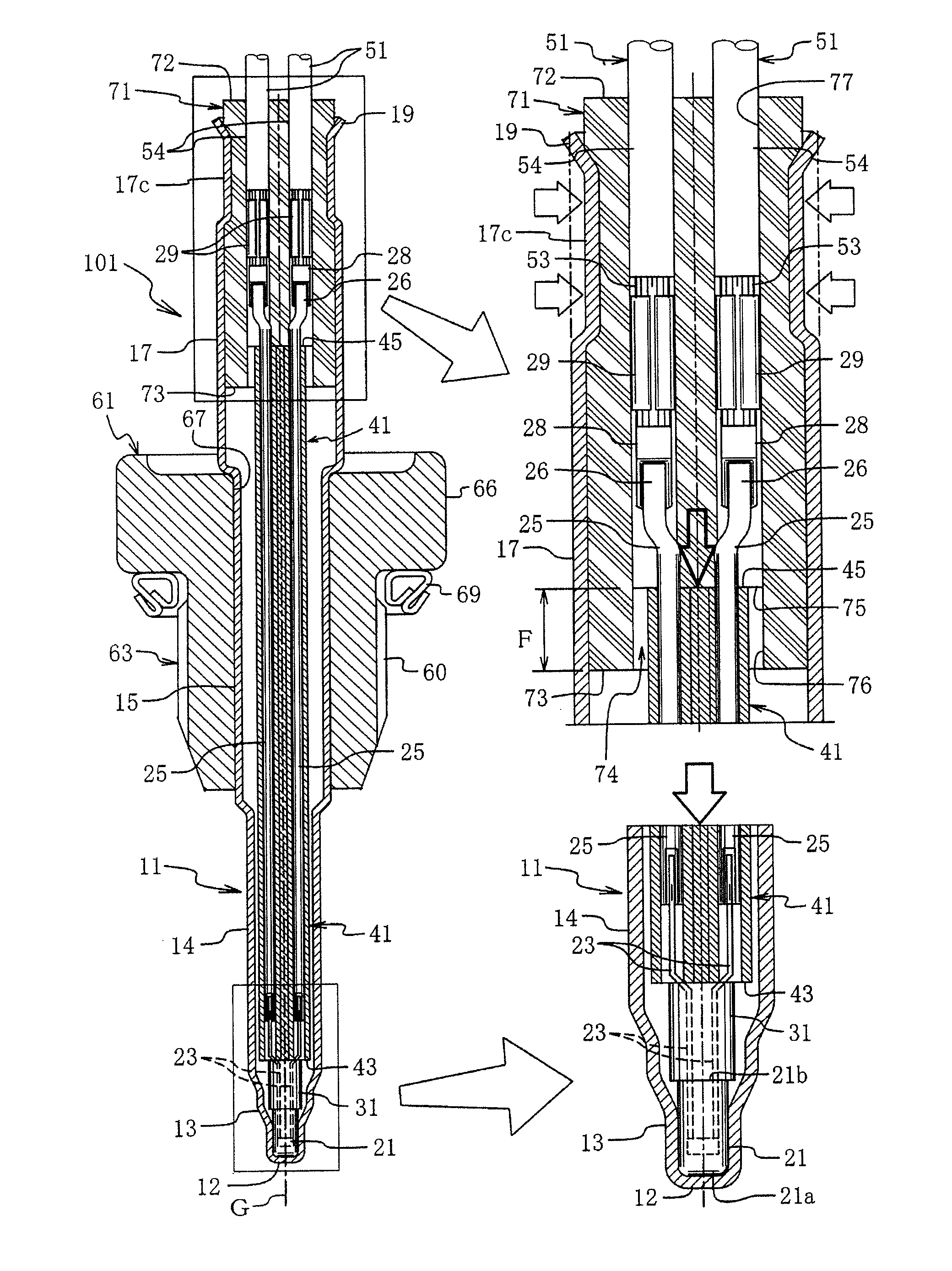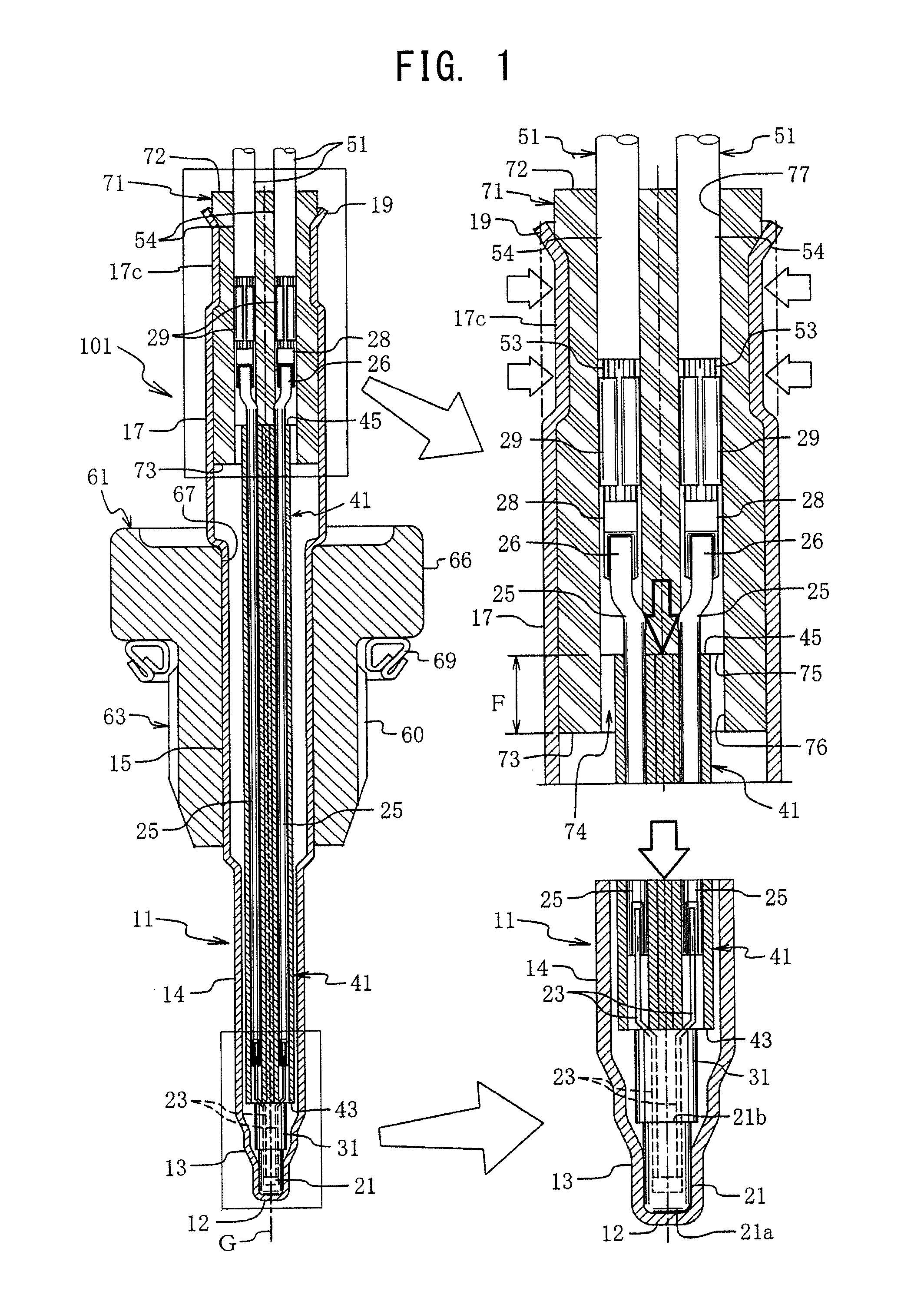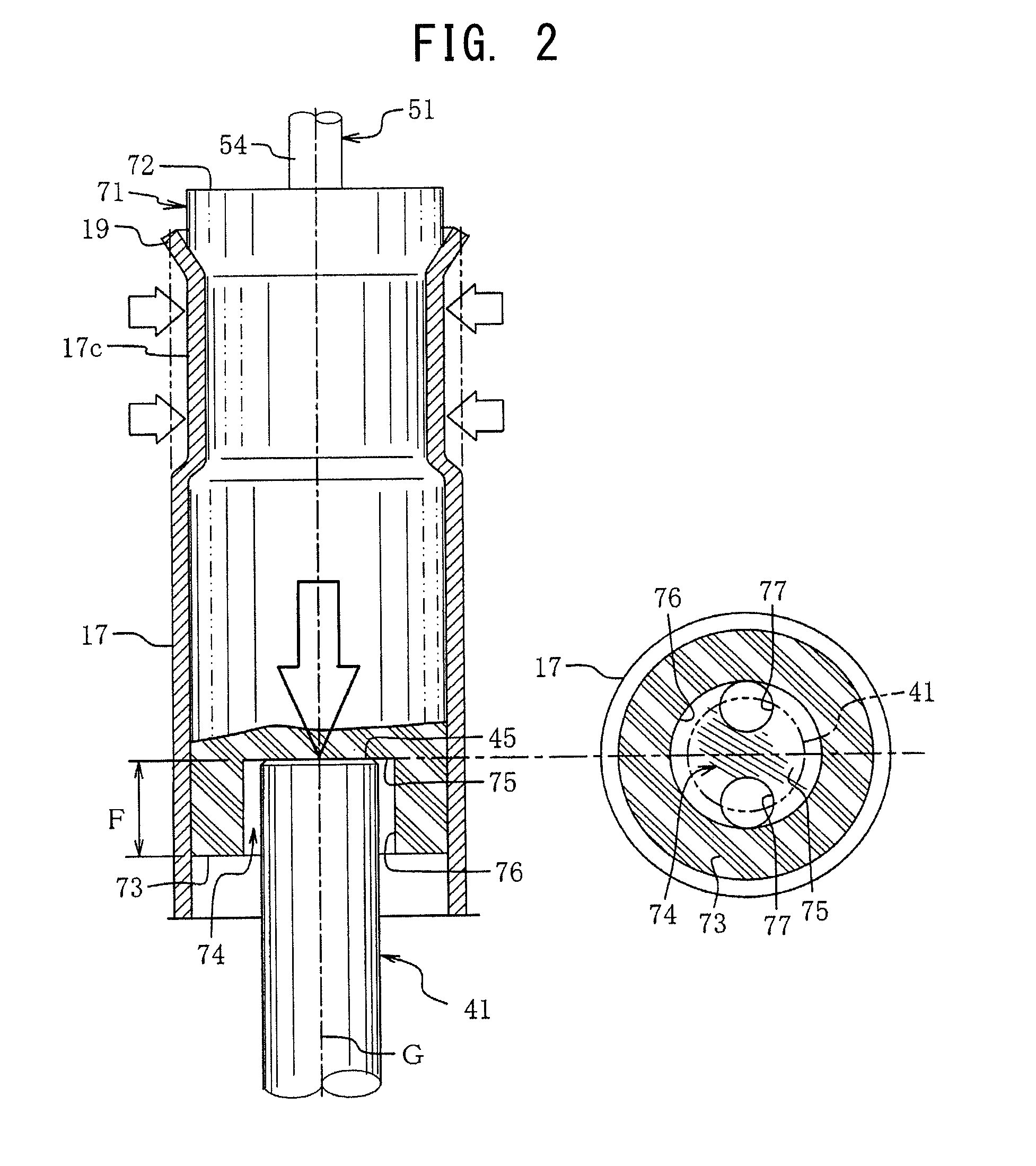Temperature sensor
a technology of temperature sensor and sensor body, which is applied in the field of temperature sensor, can solve the problems of responsiveness and temperature sensitivity deterioration, and achieve the effects of preventing the separation or movement of the element from the front end of the tube, preventing the deterioration of responsiveness or temperature sensitivity, and eliminating cemen
- Summary
- Abstract
- Description
- Claims
- Application Information
AI Technical Summary
Benefits of technology
Problems solved by technology
Method used
Image
Examples
Embodiment Construction
[0068]The invention will next be described in greater detail by reference to the drawings. However, the present invention should not be construed as being limited thereto.
[0069]A temperature sensor according to an embodiment of the present invention will now be described in detail with reference to FIGS. 1 and 2. In FIG. 1, reference numeral 101 denotes a temperature sensor. The temperature sensor 101 includes a tube 11 made of metal (e.g., SUS) and having a closed front end 12; a temperature sensor element 21, which is disposed within the tube 11 such that the front end thereof is pressed against the front end 12 of the tube 11; an element support 31, which is an insulation member and is disposed rearward (upward in FIG. 1) of the element 21 within the tube 11 and through which electrode wires 23 extend rearward from the element 21; and an insulation sheath 41, which is a wiring insulator and is disposed rearward of the element support 31 and through which core wires 25 connected t...
PUM
| Property | Measurement | Unit |
|---|---|---|
| force | aaaaa | aaaaa |
| diameter | aaaaa | aaaaa |
| diameter | aaaaa | aaaaa |
Abstract
Description
Claims
Application Information
 Login to View More
Login to View More - R&D
- Intellectual Property
- Life Sciences
- Materials
- Tech Scout
- Unparalleled Data Quality
- Higher Quality Content
- 60% Fewer Hallucinations
Browse by: Latest US Patents, China's latest patents, Technical Efficacy Thesaurus, Application Domain, Technology Topic, Popular Technical Reports.
© 2025 PatSnap. All rights reserved.Legal|Privacy policy|Modern Slavery Act Transparency Statement|Sitemap|About US| Contact US: help@patsnap.com



